Getting successful results from your digital marketing efforts requires a plan. Starting with a good plan will not only help you grow your business, but will save you time and effort in implementation.
We’ve created a plan you can adopt for your organization to put you on the right path.
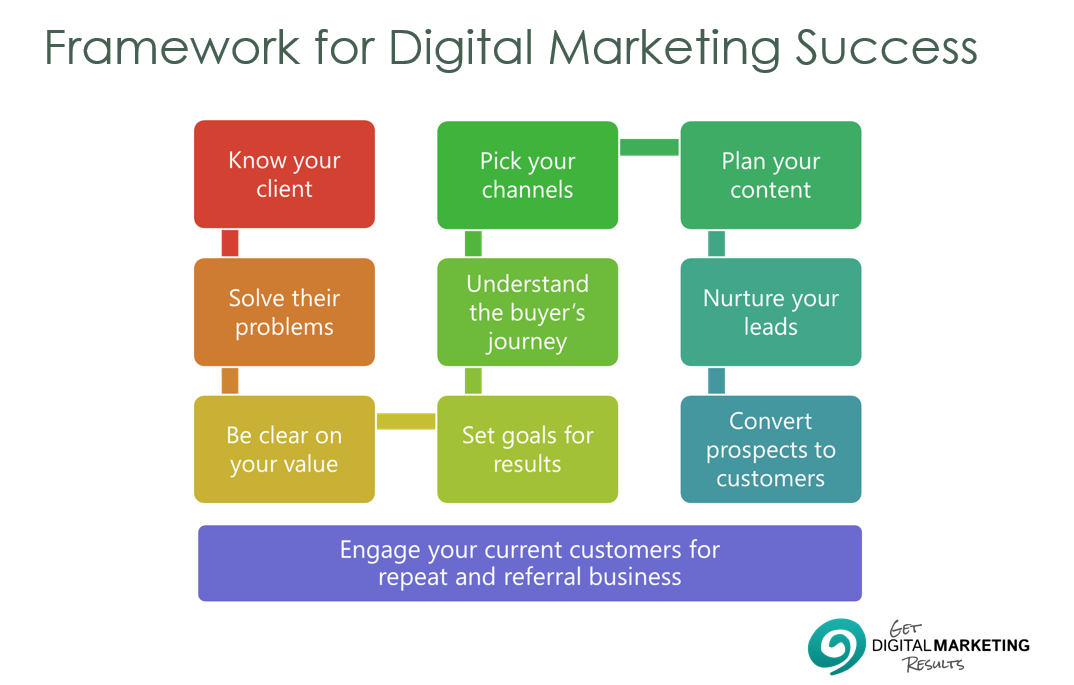
Let’s take a look at the aspects of the framework.
Know Your Client
Who are you trying to reach? In this age of information overload, your messages must resonate with your audience. If you try to connect with everyone, you will end up connecting with no one.
Create a marketing persona – a profile of your ideal client. Look at:
- Geography
- Demographics
- Interests
- Lifestyle
- Goals
- Challenges
- Values
- How they get their information
When looking at characteristics of your current customers, focus on your best customers – the type of customer you would like more of. Also think about the people who are not your client. You will get some customers that don’t fit your ideal, but that doesn’t mean your should spend time trying to attract them!
Solve Their Problems
When someone purchases a product or a service, they are looking to solve a problem they have. The better you can understand the challenges and the problems your ideal client faces, the easier it is for you to position yourself as the answer to what they are trying to do or achieve. Look beyond the basics, and try to understand the discomfort someone has in their situation things like overwhelm, lack of time, frustration or uncertainty. Think about their aspirations too. What are they looking for? Is it family time, relaxation, security, career advancement, belonging, or recognition?
- What problem do they have?
What are their goals and aspirations?
What are their challenges and pain points?
Be Clear on Your Value
Why should someone do business with you?
Know what differentiates you
You are probably not the only source of the product or service you provide. What other options do people have? Really evaluate what you are good at and tailor your offerings accordingly.
Craft your message
What is your value proposition? This is the message that tells people clearly why they should notice you, take action, and do business with you. It speaks to your target audience, your differentiators, and your benefits. Why you?
Set Goals for Results
What do you want people to do as a result of your digital marketing efforts? Do you provide a service that you want them to use? Do you want them to purchase a product? Do you want them to join your organization or donate to your cause? Are you building awareness for your brand?
Strong, clear calls to action work best to guide people in the direction you want. Don’t assume that people will figure out what you want them to do. Be specific, and use a single call to action in a given campaign.
Understand the Buyer’s Journey
The sales process has changed dramatically as technology has evolved. Buyers today are researchers. Consumers now want a lot more information before they ever contact a salesperson.
How does a person buy from you? Map out the process someone goes through when purchasing from you. Each organization is different, but listed below is a typical buyer’s journey.
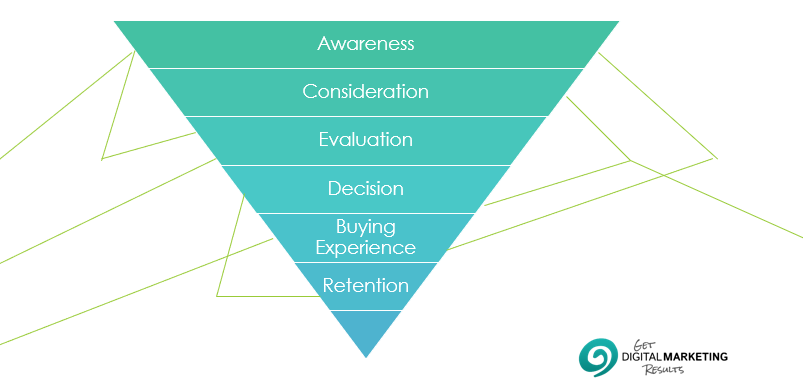
- Awareness – they know they have a problem and they want to solve it
- Consideration – they research options to solve the problem
- Decision – they decide to purchase
- Purchase/ Buying Experience – they make the purchase and implement your solution
- Retention – they want to stay with you and refer to you
Your marketing plan should take into consideration the various stages of the buyer’s journey and should include elements for each stage.
Pick Your Channels
It can seem like there is a new social media platform or opportunity every month. So where should you focus your efforts to get the most out of your marketing strategy? It is important to have a consistent message across channels. This strengthens the message and also allows you to streamline your marketing efforts. Here are some considerations for picking your channels.
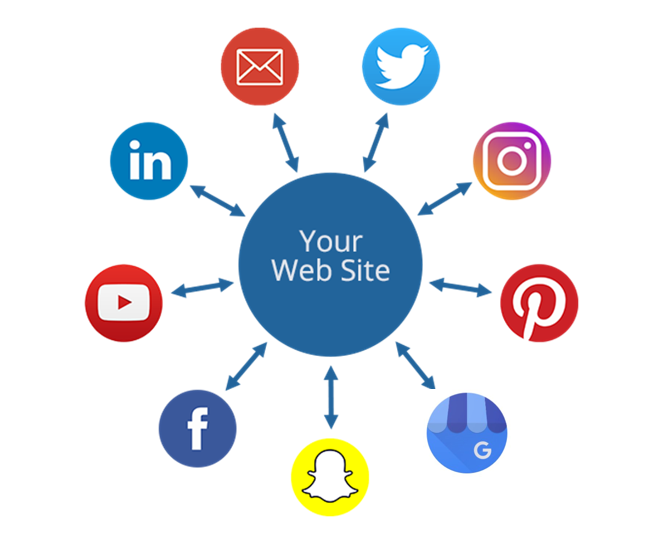
Local Businesses
If you are a business operating in a specific geographic area the most important thing you can do is make sure you are showing up on maps. Much of what we do on mobile devices has local intent. In order to be found in a local area, you must on the map. One of the first things you should do is claim and verify your business listing on Google. \It’s free and Google does not call you.
Your Website
Make your website the center of your strategy. This is important because you own your website and control the content there.
Social media channels are rented land, meaning you don’t have as much control over your presence. Social media is in the moment too, so it is difficult to get find the information about you that doesn’t change very often. Information like why you do what you do and he range of products and services you offer is not always visible on social media.
Pick a website platform that is easy for you to update with new information. To rank well you must have good content. Are you providing the answers to the questions people ask in search. Other key considerations to improve search ranking and user experience for your website today are:
- Mobile-Friendly – More visits are made from mobile devices than desktop devices
- Fast – Potential customers hit the back button – especially on mobile – if it takes too long to load
- Encrypted – All sites should be using HTTPS which encrypts traffic between the website and the viewer (marked with the green lock icon in your browser) Browsers like Chrome and Firefox mark sites that do no use the HTTPS protocol as “Not secure.”
Your Email List
Your goal should be to convert social media and website traffic into leads, prospects, and fans you can contact when you want. Consumers still prefer email for communications from businesses. Some of the benefits of email are:
- Customers are there – your customers are in their inbox every day
- Deliverability – unlike organic social media, people actually get your message
- Action – the recipient must choose to do something with your message. Even if they don’t have time to read, they still see your name and the subject line to your message. You are reminding them of you.
Social Media
Use social media to spread the word and reach new potential customers. You don’t have to be on all the social media channels. It is best to focus on those your ideal client uses most. When starting out:
- Claim your profiles
- Observe conventions
- It’s called social for a reason. – Make your message entertaining, informative or useful to your audience.
- Consider it an advertising platform.
Advertising
Paid search engine advertising is appropriate and cost effective for many businesses. Social media platforms are increasingly becoming paid advertising platforms for business. This is especially true for Facebook and Instagra, where organic reach has been consistently declining for businesses.
However, the targeting available in social media and search engine advertising can make it a great value. You can reach exactly the right people, and measure the effectiveness of your campaign with more precision than traditional advertising channels. Google Ads and Facebook Ads are two of the biggest advertising platforms, but your organization may benefit from more specialized or smaller platforms as well.
Plan Your Content
You know where you want to get your message out, but what are you going to say? Your content could be considered the most important part of your marketing strategy. Remember the buyer’s journey – create content that is useful and relevant at each stage of the process for your customers.
Create a map of the types of content you will create. Consider the seasonal aspect of your business. Also think about repeating features you can use throughout the year. For example, if you decide on a featured product of the month, what sort of product information, helpful tips, buying guides, promotions, etc. can you create around that message? That becomes part of your content plan for that month.
It is important to create content in a way that is engaging and relevant to your audience, but also time-efficient for you. Repurposing older content and creating evergreen content–content that is always relevant–should be part of your plan. What do you have already? What questions are you answering most frequently for your customers and prospects? Be human. People want to connect with people, so don’t be afraid to add some personal elements. Spotlight a team member or customer, share what you are doing in the community, or add a few fun elements to your content like contests, polls, quotes, or celebrations.
You already have the content. If I were to express interest in your product or service in person, you wouldn’t tell me you couldn’t help me because you have no content. Think about what you are already telling people and tell this story online. If you are not comfortable writing, consider using a podcast or video to get the word out.
Develop processes and use tools that automate and streamline digital communications
Try to automate as much of your marketing campaign as possible to free up time. Use an editorial calendar. Editorial calendars help keep your marketing content organized and on-schedule. Use scheduling. Most digital marketing platforms allow you to schedule content so you don’t have to spend a lot of daily time to have a presence.
Create a Social Mix
For social media in particular, use the 80/20 rule. 80% interesting, informative, useful, entertaining content and 20% promotion.
Put your most important content and messaging on your website and supplement this with other content on social media and in your email. Get it all in a calendar so you know what to create and when.
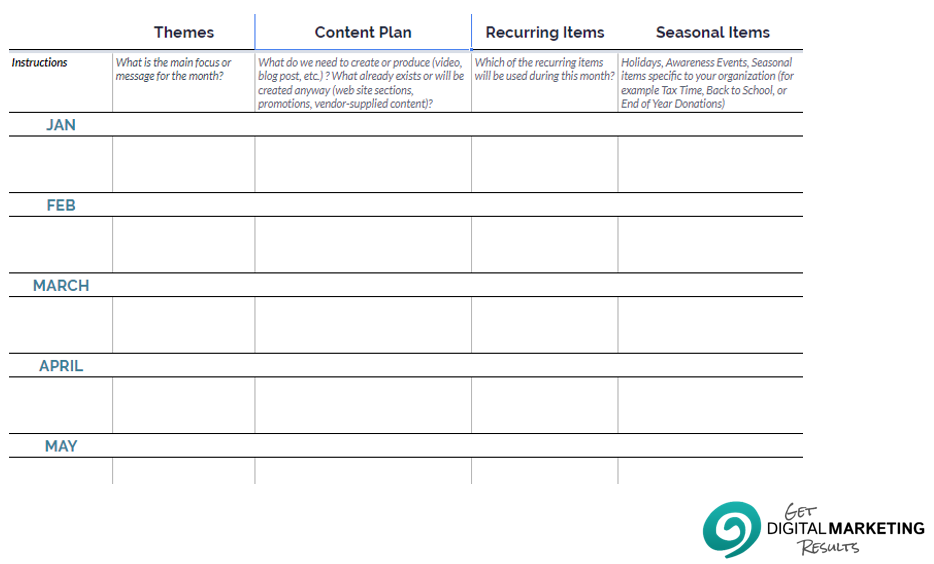
Execute and Tweak the Plan
Once your plan is set, make executing part of your regular business processes. Make sure someone has responsibility for it.
Monitor your results, but give it time too. Consistency builds traction. Do more of what is working for you, and tweak what is not. One of the most valuable things about digital marketing is the metrics and analytics built into the platform so you see what is working and what is not. Use these.
Nurture leads
Someone responds to your call to action. What next? Have in place a process for following up on the leads you do receive. Once someone has demonstrated interested in you, how do you build a relationship with them? People buy from those they know, like and trust. Building this relationship happens online and offline.
Often it is a situation where it is who a prospect remembers last. Continuing communication is an easy and effective way to keep your business in the back of people’s’ minds. People will do business with companies they grow to know, like, and trust. There are a couple of ways to keep communications open:
- Have a place in process for keeping in touch once they respond to your call to action.
- Grow your email list.
- Targeted drip campaigns and autoresponders can give each lead your best, ideal follow up to move them along the buyer’s journey. These emails are a personalized sequence of messages that is valuable to the contact.
You’ll also want to identify which of your leads are prospects. While a lead is someone who expresses an interest in you, a prospect is a person who has already been qualified by you or your sales team as having the interest and ability to make a purchase. On average 50% of leads in any system are not ready to buy yet and almost 80% of new leads never become sales. Nurtured leads make 47% larger purchases than non-nurtured leads.
Convert Prospects to Customers
Converting prospects to customers requires consistent follow up. You need to have a repeatable process in place to make sure that you’ll follow up and in a timely fashion. How are you tracking and managing your prospects?
Remember in the new social selling that you don’t want to hard-sell prospects on your business, but should focus more on solving problems that are meaningful to them.
Engage with your current customers for repeat and referral business
Don’t forget your existing customers. What are you doing to make them fans and ambassadors for you? How are you encouraging them to continue to do business with you? Make existing customers part of your content and outreach plan.
Make This a Project to Get Results
If this seems like a lot of steps to you, realize that you have to treat this as a project. Investing time in developing this framework and planning for your organization is necessary to see the results. Make this process a project and schedule time for it on your calendar. This investment will pay off.
Your Blueprint for Digital Marketing Success
Sign up below and get our Blueprint for Digital Marketing Success. This guide can be used as a template for your personalized plan.
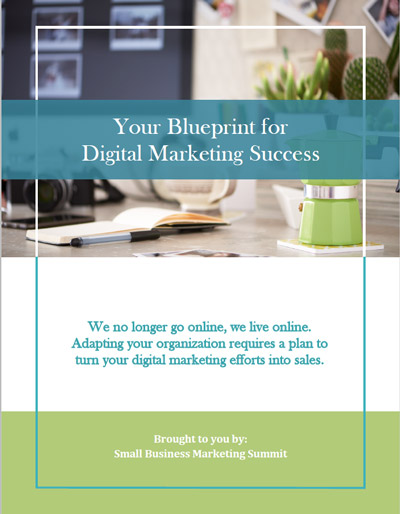
Get Your Blueprint for Digital Marketing Success
Are you ready to get results from your online marketing efforts? We no longer go online, we live online. Adapting your organization requires a plan to turn your digital marketing efforts into sales.
We never share your info.
Prefer to Watch?
Watch the recording of a webinar we presented where we talk about 4 parts of this plan:
- Know your client
- Understand the buyer’s journey
- Pick your channels
- Convert prospects to customers

